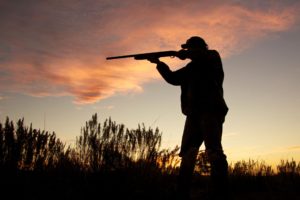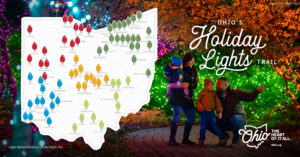In the Open: Black Vultures Becoming More Common in the Bend Area
As a soil and water conservation district (SWCD) wildlife specialist, one of my professional interests is tracking wildlife trends that may eventually affect people living in my area, particularly here in Meigs County.
So over the past 10 years or so, I have been reading about or listening to accounts of black vultures here in Ohio, but hadn’t actually seen any (until the past two years), and wondered if I would be able to differentiate between them and our familiar turkey vultures.
All I can say is that when you see them, you’ll know. Particularly if that experience involves seeing literally hundreds of them flocking the hillsides, roof tops and trees of a small, Ohio River village – which I will get back to in a moment.
The black vulture, to bring you up to speed, is not necessarily an invasive species. It is native to North America but we are at the northern end of its range, which seems to have been expanding somewhat over the past 50 years or so. In that respect, it is more like the coyote (or the armadillo, which we may see around here in the next 20 years or so – remember you read it here first).
The black vulture, like the familiar turkey vulture, is a large bird. The turkey vulture is a little larger, but not so much that it is obvious to the casual observer. The black vulture is black or mostly black, while the turkey vulture is actually more of a dark brown. In flight the black vulture has shorter wings, white wingtips, and a smaller, abbreviated tail. Up close is where the difference is obvious; the black vulture has a black or dark gray head and dark beak, while the turkey vulture has the familiar red head and yellowish beak.
Lately the Union Avenue neighborhood in Pomeroy has been covered with hundreds of roosting black vultures, roosting in the trees and along the tops of roofs, resulting in more than a few phone calls and complaints. Last weekend Ohio Wildlife Officer Chris Gilkey and I spent an hour or so checking out the scene and even fired a few noise-making “shell crackers” to disperse them temporarily.
Residents actually have a reason to be concerned, according to the U.S. Department of Agriculture’s Animal Plant and Health Inspection Service. Large groups of vultures (both turkey and black) may roost or occupy woodlots near people’s homes, damaging homes and commercial buildings by tearing window caulking, roof shingles, vent seals, rubber roof liners, and pool covers. They can even damage vehicles by scratching paint, removing rubber seals and wipers, and ripping vinyl covers and tops.
Vultures can also create health and safety concerns due to accumulations of feces and regurgitations on house roofs and office buildings, while the smell is also offensive.
Black vultures are also known to be predatory in nature. It’s like they are saying, “To heck with waiting for something to die, let’s go kill something!” They may attack and kill calves, lambs, piglets and other weak animals, but that is another concern.
Although they aren’t considered migratory, they may go for short distances in cold weather near the northern end of their range. Hopefully the cold weather of the past few days encouraged them to move to warmer climes.
All vultures are protected under federal migratory bird laws, so you can’t kill or harm them, but neighbors can still mobilize and harass them where they roost, eventually making them decide to go somewhere more peaceful. Tactics involve using noisemakers, harassing them with lasers and spotlights at dusk, and installing physical barriers (monofilament lines along roof ridges) to discourage them from roosting. In some cases permits can be issued to kill one or more, and the bodies hung up or displayed in effigy to frighten other vultures.
Despite the nuisance that they cause, it is important to remember that these scavengers occupy an important niche in our ecosystem and provide a valuable service. It is just that sometimes we want them to occupy it elsewhere.
Jim Freeman is the wildlife specialist for the Meigs Soil and Water Conservation District. He can be contacted weekdays at 740-992-4282 or at [email protected]









